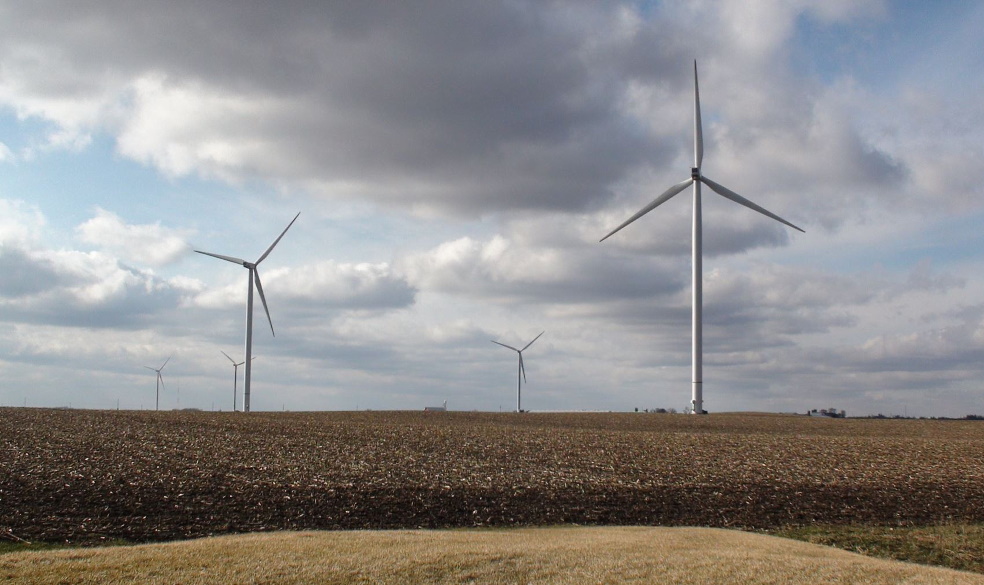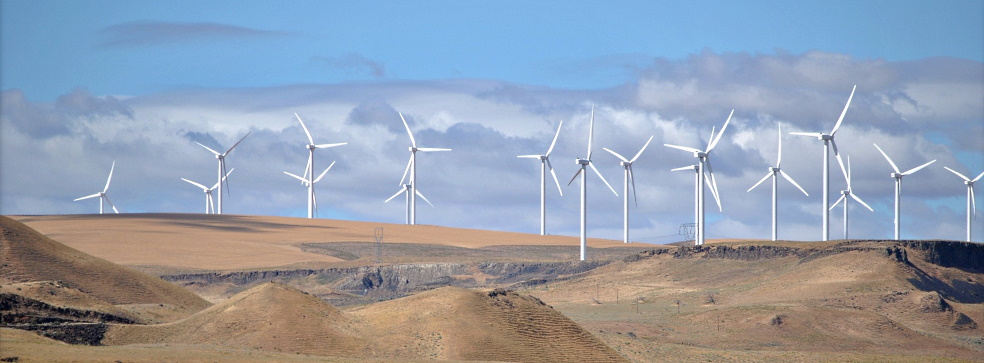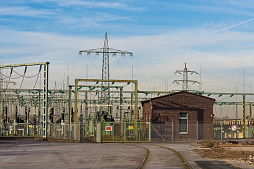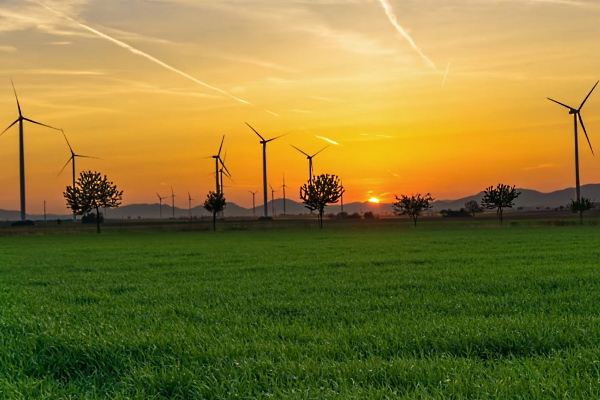After receiving the necessary documents and project presentation, our team will try to review your request as soon as possible, and leading experts will offer the best options for project funding.
Wind power is developing rapidly in Europe and around the world.
Over the past 5 years, wind power accounts for more than one third of all installed generators in the world.
The rapid growth of the industry is due to both investor interest and phenomenal successes in the design of wind turbines and an increase in the capacity of generators.
Investments in wind energy are guided by the requirements of profitability and sustainability.
One of the benefits of investing in wind-driven energy production is the predictability of energy costs. In addition to economic benefits, wind farms are helping to make energy production more environmentally friendly.
The company provides customers with environmentally friendly power for many years. Engineers have been working on the design, construction and maintenance of wind farms around the world.
GCAM offers financing and long-term lending for the implementation of wind energy projects.
The construction and launch of a wind power plant, as a rule, takes from 6 to 18 months, depending on the size of the project, the terrain, the difficulties of connecting to the distribution grid, as well as the delivery and installation of turbines.
Negotiations with the community and municipal authorities regarding the noise and traffic may be required.
The range of services includes:
• Wind project site assessment.
• Business concept and financial support.
• Environmental studies and determination of wind energy potential.
• Protection of the project in accordance with national legislation.
• Technical planning and micro-siting of wind turbines.
• Planning of electric power distribution.
• Tenders for the purchase of turbines and other equipment.
• Project construction and turnkey project implementation.
• Operation and maintenance, optimization of wind farm operations;
• Repair and modernization.
In most European countries, wind energy is gradually entering a mature phase.
This stage of development brings new challenges and opportunities. Investors interested in renewable energy should consider the new trend in the wind energy sector. This is the active disposal of obsolete turbines and the re-equipment of wind farms, which is gaining momentum around the world.
Financing of wind farms is the main areas of our work.
Want to learn more about new investment opportunities?
Contact our representative.
We are financing wind energy investment projects around the world.
Many entrepreneurs have ideas and even suitable sites for the construction of a wind farm, but there are no available funds for the implementation of the project.

If you are interested in financing an energy project through the leading commercial banks, we are ready to assist in providing a business credit on the most favorable terms.
Wind farm engineering & construction services
Our team has gained extensive experience in wind energy projects. We provide consulting, technical and legal assistance for clients from all over the world.Feasibility study for the wind power project
Obtaining permission for onshore wind turbine projects can be difficult and expensive, and any effort is risky. Investor should consider this fact.When considering a wind farm project, it is important for an investor to understand the extent of these risks, as well as to assess the cost, return and environmental benefits.
The purpose of the feasibility study is as follows:
• Determining the most suitable power and location of the turbines.
• Comprehensive assessment of the wind energy resource directly on construction site.
• Expert assessment of technical problems that may affect investment project.
• Initial assessment of project cost and return on investment.
Read more about conducting a feasibility study below.
Assessment of the physical constraints
The first objective of the feasibility study is to determine the physical limitations of the proposed construction site.Is there sufficient deployment area for a wind turbine in this area?
Which model might be most appropriate?
How to install it correctly?
Customers often wonder how few sites are suitable for building a wind power plant. A feasibility study takes an important step in understanding the potential capabilities of a given site.
At the first stage, engineers use special software to analyze the site map with all natural and man-made objects, mapping the location of roads, railways, forest plantations, residential and non-residential buildings, power lines, etc. Engineers take into account any landscape features that can affect the perfomance of the wind farm.
Planning constraints map
During the next step, specialists create a map that includes physical limitations along with other factors that potentially affect the viability of the wind energy project.Choosing the optimal construction site, they use special software that analyzes the risks associated with environmental, social, legal and other factors of a particular area.
Risk factors include:
• Aviation: the presence of radars, low-flying areas and closed areas.
• Communication: the use of microwave communication systems.
• Culture: the presence of monuments of architecture and antiquity.
• Ecology: fauna, especially birds and bats.
• Landscape: national parks and tourist sites.
Mandatory risk studies are conducted for areas with active mining.

Construction risk report
Based on the results of the analytical work, the investor is provided with a detailed report, which includes the planning constraints maps themselves, an analytical table with the classification of risks and recommendations for further consideration.Although the report is subjective, it gives the investor a good idea of the overall project risk and the points to focus on. Consultants will advise the investor on all issues.
Planned development
Together with our partners, we use information about planned developments in the coming years, collected through the municipality and other channels. This data is related to any new investment projects in the area.Experts analyze the local urban policy and other aspects that help to predict the situation in the construction area for 5-7 years in advance. Often such a review sheds light on local issues that may pose an additional risk to an investment project.
Finally, specialists agree with local authorities on plans to build a wind power plants or individual turbines in the proposed area.
Power grid features
Obtaining official permission to connect a wind power plant to the national power grid is considered a key risk factor for any wind energy project.At this early stage, we analyze grid limitations in a specific region using software tools and information from energy companies. We consult with the operator and receive information about potential technical problems that may affect the project.
The only accurate way to determine the capacity is to file an official application and sign an agreement on connecting to the power grid. However, this is inappropriate at an early stage of the project due to high costs. It is reasonable to apply for a grid connection agreement in parallel with the construction approval process.
Power generation and financial modeling
Using data on wind resources, type and location of turbines, we predict the annual production of electricity. Experts can perform additional modeling of full energy optimization.This service is necessary for placing wind generators in such a way as to maximize energy output and minimize losses from turbulence.
After preliminary calculations, we can predict the most realistic export of electricity, annual wind power plant income and other financial indicators. We take into account operating rates and scheduled repairs, insurance, and other expenses to give you realistic numbers.
We and our partners will provide cost estimates for the entire project, including the remaining stages of the study, obtaining a construction permit, engineering and the installation of the wind turbines.
Evaluation of microwave transmission lines
Once the most suitable location for the wind turbines has been determined, we begin consultations with the competent authorities. During the consultations, the presence of microwave transmission lines on the proposed site is checked.At this stage, close cooperation with local authorities and owners of the line is required.
Sometimes we need to change the location of objects.

Then, the proposed route is displayed on a map where all problem areas are classified as low, medium and high risk. We give professional recommendations for further work.
No software tools and online services can be compared with an actual visit to the construction site and site inspection. Therefore, engineers always go to construction sites for photographing, measuring and additional research.
Project summary and risk assessment
The feasibility study for the construction of a wind farm will present the main problems and risks for the project in all aspects to be evaluated, as well as considerations for investors.The cost of the feasibility study is calculated individually, depending on the complexity and scope of the above services.
Wind power plant construction step by step
Wind power plant construction requires experience in engineering, electrical engineering, architecture, logistics, and project management. You need a team of highly qualified professionals.The construction phase begins with engineering. In the design of wind farms, the results of topographic surveys are used to determine the characteristics of elevations and soil. Specialists also use geotechnical survey data and soil resistivity tests for the electrical grounding system.
This information affects the location of key elements such as a wind turbine, transformer and high voltage substation. After determining the location of the main elements, engineers can calculate the distribution of electricity and plan cable routes.
We work with experienced engineering companies that design and supervise the main construction works, and, if necessary, conclude contracts with the best civil engineering contractors to ensure the best possible project cost.
In addition to careful monitoring and reporting at each stage of work, we stay in touch with the investor in order to make adjustments to the approved project if necessary. After installing the equipment, engineers organize the testing and commissioning of a wind turbine.
Typical phases of wind farm construction
The wind turbine consists of four main parts: foundation, tower, gondola and rotor with blades.The rotor converts wind energy into rotational motion. The gondola contains an electric generator and other components that convert the mechanical rotation of the rotor into electricity. The tower supports the gondola and rotor on a reinforced concrete foundation.
This whole structure, generating power from several hundred kilowatts to almost 8 megawatts, reaches 120 meters in height and has a rotor diameter of up to 150 meters. The weight of a modern wind generator can reach several thousand tons.
To deliver to the place, install, and connect this equipment to the electric grid, you will need large-scale construction project. One of the first steps in the construction process is the clearing of the territory and the arrangement of gravel access roads. Access roads are built from existing public roads to the construction site to provide access to equipment for construction, ongoing operation and maintenance.
Temporary access roads are being built in a corridor about 12-15 meters wide. Before laying the gravel, the topsoil is removed, the soil is compacted and a heavy-duty coating is laid. After the construction is completed, access roads are converted into permanent roads about 5 meters wide.
In this way, very heavy loads can be transported to a remote rural area where there are no normal roads. The pipeline, which is needed for construction work, is brought to the construction site from the nearest water intake.

To install a wind turbine, two cranes are needed. A smaller crane is used to install the turbine control system and the bottom of the tower.
It is also used to assemble the rotor. A larger crane is needed for mounting the upper part of the tower, as well as the gondola and rotor at high altitude.
Due to its size and speed, a large crane cannot move along public roads. The success of this phase of the construction of a wind farm is laid at the stage of site preparation. Typically, temporary access roads to a future wind farm cross farmland.
Construction is preceded by careful legal work with land owners, including crop loss compensation.
The wind power plant has a numerous underground electrical cables that run from each turbine to the grid. Requirements for trenches for laying cables, including the minimum depth, varies depending on your national standards and the features of the project.
The first step in building the foundation is to remove the topsoil and dig a pit about 3 meters deep.
Here, in the center, a reinforced concrete base is installed, the top of which remains above the surface of the earth and serves to install the tower.
When the foundation is completed, cranes install a wind turbine. The cleared site will remain after construction to carry out planned maintenance work, as well as for wind farm modernization.
Modernization, operation and maintenance of wind farms
For two to five years, any wind turbine is under manufacturer's warranty and undergoes maintenance in accordance with the annual schedule.Proper operation and maintenance (O&M) maximizes wind turbine performance and extends its life.
After the warranty period, the responsibility for the safety of the equipment rests with the owner of the wind energy plant. Since the cost of modern multi-megawatt turbines is up to a million dollars per megawatt, O & M is the key to the profitability of the wind energy project.
Wind farm maintenance is any process aimed at maintaining wind turbines in good working order. Maintenance includes regular lubrication of moving parts (gears, bearings), checking the connection inside the systems, urgent solution of technical problems and setting up equipment.
Currently, the operation and maintenance of wind farms costs tens of thousands of euros per megawatt.
For example, in the United States, the average annual O&M cost exceeds $ 50,000 per MW and grows by 3-5% per year.
From the point of view of safety and profitability of your investments, it is extremely important that the wind farm equipment is always kept in optimal working condition. This reduces the loss associated with unexpected downtime and repair.
Engineers offer a full range of professional services for the operation, maintenance and modernization of wind power plants.
Monitoring the technical condition of the wind farm is fully automated.
Sensors located at key points in each turbine send important data to service technicians. This data includes information on lubrication condition, vibration, temperature, and even foundation displacement. All this data is used for technical maintenance planning.
When the wind turbine requires maintenance, we appoint a responsible specialist and immediately resolve the issue. A wind farm with 250-300 turbines would require many in-house specialists and expensive technology to keep them all in peak operating condition.
We take care of the owner, offering personalized financial and technical solutions with optimal cost / effectiveness.
Video: stages of preparation, assembly and installation of a wind farm
Are you considering a wind farm or wind turbine project?
Do you need project financing?
Providing basic project finance services, we can assist your project from the technical side by recommending our reliable partners in the form of engineering companies.
We offer the most advanced tools for the implementation of your investment project, from a feasibility study to construction.




























